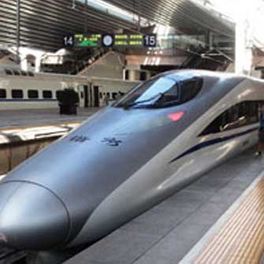Last updated: Nov. 14, 2020
When it comes to Chinese Cuisine, be warned, there are some pretty crazy dishes out there that might blow your mind and destroy your will to live. However, there are also a lot that you simply can’t go to China not try.
In the west, we have basically ruined Chinese food by Americanizing it until its really not Chinese food at all anymore. In fact, some our favorites are not things you would ever actually find in China. Don’t go looking for General Tso’s Chicken. First off, General Tso had nothing to do with chicken! Forget everything you think you know about Chinese cuisine, and enter a world of diversity that rolls in regions, not sauces.
There are eight different regional cuisines that you will likely encounter in China and luckily for you, we’re going to help you figure out the differences before you go walking into a Chinese restaurant looking for orange chicken and end up looking like a fool. The first thing you should know, is that when you walk into a Chinese restaurant, it’s not like it is in the west. In fact, if you’ve ever ordered “Chinese Food” at home, you’ll know that you don’t look at the menu and decide what you want for each person. You look at the menu and decide what everyone wants and figure out how to substitute stuff in meal platters, then you order and hope for the best, usually resulting in having way too much food and needing a nap after feasting on it.
Chinese restaurant ordering is a family style affair where everyone in the group just orders a whole pile of different dishes and everyone eats a bit of everything. There are some general etiquette rules to keep in mind too. Nothing too complicated; don’t dive in until everyone has sat down, don’t stab your chopsticks into your food because it’s a bad omen and a thing done with incense at funerals…so lay them across your plate like a civilized human being, and get ready to fight for the bill because that’s just a thing that the Chinese expect you to do. Maybe they enjoy the entertainment of a dramatic fight for the cheque after the meal, I mean, it can be pretty funny especially when grandparents are involved!
Now that we’ve gotten that out of the way, let’s get into the good stuff! The eight regional cuisines!
You’ve got Cantonese, Sichuan, Jiangsu, Zhejiang, Fujiang, Hunan, Anhui and Shandong Cuisine. Relax, I know it sounds like a lot, but we’ll figure it out, I promise. To make things easier, we’ll focus on the top four that you will be most likely to encounter and find the least terrifying. Starting with…
Cantonese Cuisine
This is the most popular Chinese cuisine you have probably encounter in life. Its been super westernized and tends to be a favorite for those who really want to eat Chinese food but are also afraid to eat “real” Chinese food. You can get it all over the world in a variety of dishes that are delicious and relatively easy to understand. Cantonese focuses on the original flavors of the food without adding a billion spices or crazy cooking methods to create. They won’t overwhelm your taste buds and you won’t find yourself trying to figure out what you are actually eating. The most popular Cantonese dishes you probably already know are Dim Sum, Shark fin soup, Steamed egg, and You Tiao.
Jiangsu Cuisine
Alright, things can get a little complicated with Jiangsu because not only does it come from the Jiangsu region, but you’ll also get a mash of Yangzhou, Nanjing, Suzhou and Zhenjiang foods thrown in there too. This is a type of cuisine you are most likely to encounter in a more upscale kind of environment. They are usually gourmet and glorious with a taste that goes for a fresh and light appeal. You’ll find a whole lot of seafood (more than the usual) with Jiangsu Cuisine, so if seafood is what you are after, Jiangsu is going to be your friend. If you haven’t experienced Jinling salted dried duck, you’ve got to get on that! It is a very popular Jiangsu dish that offers all kinds of flavors and deliciousness. Other common dishes you’ll find are Braised pork belly (also delicious), Yangzhou fried rice (because you’ve got to get some kind of fried rice in there at some point) and Xiao Long Bao which are adorable and tasty little soup dumplings that no Jiangsu meal is complete without!
Sichuan Cuisine
Yes! Whatever is on the menu in a Sichuan Chinese restaurant, just say yes. Unless you can’t handle a bit of heat, then perhaps you should avoid the Sichuan. But if you are into spicy, then Sichuan is definitely for you. There is a glorious little peppercorn, the Sichuan peppercorn, that they use a lot in Sichuan dishes. It kind of numbs your mouth out a little bit, which you might think sounds completely insane but I swear, it’s not. But its not like every single Sichuan dish is going to burn your soul and crush your will to live, I mean, yeah, most of them are tailored to be a bit on the piquant side, so tread carefully those with delicate taste buds. There are a lot of dishes that center around the abundant use of offensive peppers. Chongqing spicy chicken, well, to say the least…the ratio of peppers to chicken might scare you away before you even get a chance to enjoy it if spicy just isn’t your thing.
Even though the west has gone and ruined a lot of Chinese foods, it hasn’t really been able to mess with the Sichuan. We love hot food in the west and people are always trying to “out spice” each other with ghost peppers and Carolina reapers, but Sichuan is a glory above the “hotness” factor because it’s got a taste to it that is unmatched. I’m pretty sure we all remember the Rick and Morty situation with the Sichuan sauce…if not, well you should probably get out from under that rock you’ve bene living under and Google that immediately. Then go get yourself some Sichuan Cuisine and open up your world to a new dimension of deliciousness. You can thank me later.
I’m sure you have heard of these more popular Sichuan dishes like Mapo tofu, the aforementioned Chongqing spicy chicken, kung pao chicken and Dandan noodles. But consider yourself warned, spicy is part of this menu.
Zhejiang Cuisine
Okay, another warning here…but this time its not about spiciness. We all know that seafood is a big fan fav in basically every kind of Chinese Cuisine, but with Zhejiang…well, cooking the seafood is more of an “optional” suggestion. And we’re not just talking about sushi here. There are a whole lot of different kinds of Zhejiang dishes that thought cooking the seafood really wasn’t necessary. But don’t let this sway you, these dishes are safe and more often than not, they are totally great. The thing with the seafood is that depending on the time of year, certain dishes will be available whereas others are not because freshness plays a big role in these types of dishes. The other thing that sets Zhejiang Cuisine apart from the other regional cuisines is the much-coveted desserts. Everyone loves a sweet treat after a big meal, and a very popular choice is the sweet Ningbo rice balls and rice cakes. There are entire bakeries dedicated to Zhe desserts all over China and the rest of the world as well and are not something a person should skip on when the opportunity arises while travelling in China. Some of the most notable dishes one should try from the Zhejiang reginal cuisine style are Jinhua ham, mud crab cooked with egg, Dongpo pork, and of course the Tang Yuan glutinous rice balls.
Anhui Cuisine
With Anhui Cuisine, you’ll see a whole lot of braising and stewing used as cooking methods for popular dishes. They are usually pretty simple and focus on bringing out the natural flavors of the foods rather than adding a whole pile of different spices and sauces. One thing that is common however, in adding to the flavors of the dishes is fresh herbs, mushrooms, bamboo shoots, berries and tea leaves as well as other wild plants that can be found all over the areas surrounding the Huangshan Mountain. Anhui is not a cuisine that one might just happen upon as it isn’t in the top four most popular regional cuisine styles, however, it has some majorly delicious dishes that anyone who appreciates fine cooking should try. The most popular dishes in the Anhui style are Stewed soft-shelled turtle soup, Stinky tofu, and Bamboo shoots with sausage and dried mushrooms.
Fujian Cuisine
This is where you will find a whole lot of sweet and sour. Light seasoning is common, but sweet and sour are the main flavors that you are going to find when experimenting with Fujian cuisines. Again, seafood is a big deal with this regional style with a lot of mussles, fish and shrimp being big parts of most of the dishes. Of course, like any regional cuisine, they also use a lot of pork, duck, beef and chicken as well. Texture also plays a big role in the preparation of these dishes where you will find things like peanuts and sugar as well as fish sauces, shrimp paste and sweetness from preserved apricots. Everything tends to be very finely chopped and jammed into a stir-fry before they are added to some kind of soup or broth. Fujian cuisine loves the stews and soups, and for good reason. Who doesn’t love a good stew?? But it may take a person with a more diverse palate to really appreciate some Fujian dishes. Some of the most common and heavily devoured Fujian dishes are one called “The Monk Jumps Over the Wall” which is made with baby bok choy, steamed chicken, sea cucumbers, fish maw, baby abalone, goose feet, dried scallops and dried black mushrooms (yeah, I know…that’s a lot to wrap your head around), Fried Xi Shi’s Tongue and Jade Pearl Abalone.
Hunan Cuisine
If you are really into spicy foods and fresh aromas, then you will love Hunan cuisine. This is one of the really lesser known regional cuisines in China, but definitely one to look into if you appreciate smoked and streamed foods. They really love their chilli peppers in Hunan recipes, which gives these dishes a spiciness but not one that is overwhelmingly hot. It’s a pleasant spice with a whole lot of flavor that also makes use of shallots and garlic as well. You’ve got to get your hands on a bowl of Changsha rice noodles if you have the chance if these are flavors that you particularly enjoy. Some of the most popular dishes in the Hunan cuisine that you might encounter are Dong’an chicken, Chopped pepper fish head, Crispy duck, Orange beef and Spicy frog’s legs.
Shandong Cuisine
Last but not least, we’ve got the Shandong Cuisine. This is the only regional cuisine where you will see a lot more eating of bread than rice, and onions play a big role in seasoning of dishes. Again, as I’m sure it is no surprise by this point, seafood is also a big go-to in Shandong cuisine. Particularly scallops, prawns, clams, squid and sea cucumbers. A lot of vegetables are very commonly used as well in basically every Shandong dish like potatoes, tomatoes, cabbages, ,mushrooms, garlic and eggplants. They also like to use a bit of a crunch factor which they use peanuts for. Good old peanuts, people with allergies beware. The most common Shandong dishes might include sea cucumbers with meat balls, braised shark’s fin with shredded chicken, and bamboo shoots.
All that being said, there are just so many different foods to experience when in China and knowing a little bit about the regional cuisines might help you decide what you are ready for, and what you might not be! Either way, with so many options to choose from, a person will never go hungry when dining in China!



